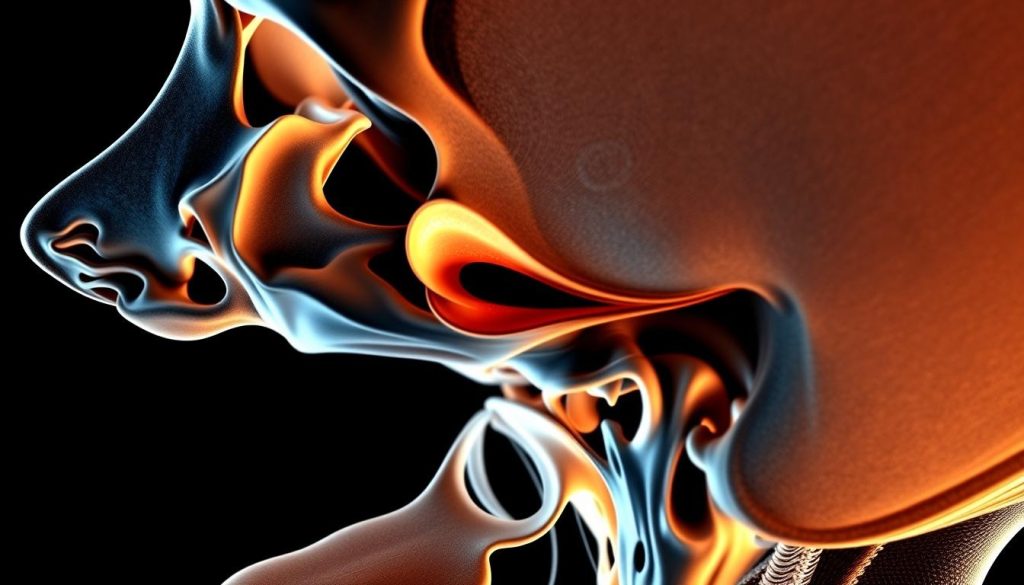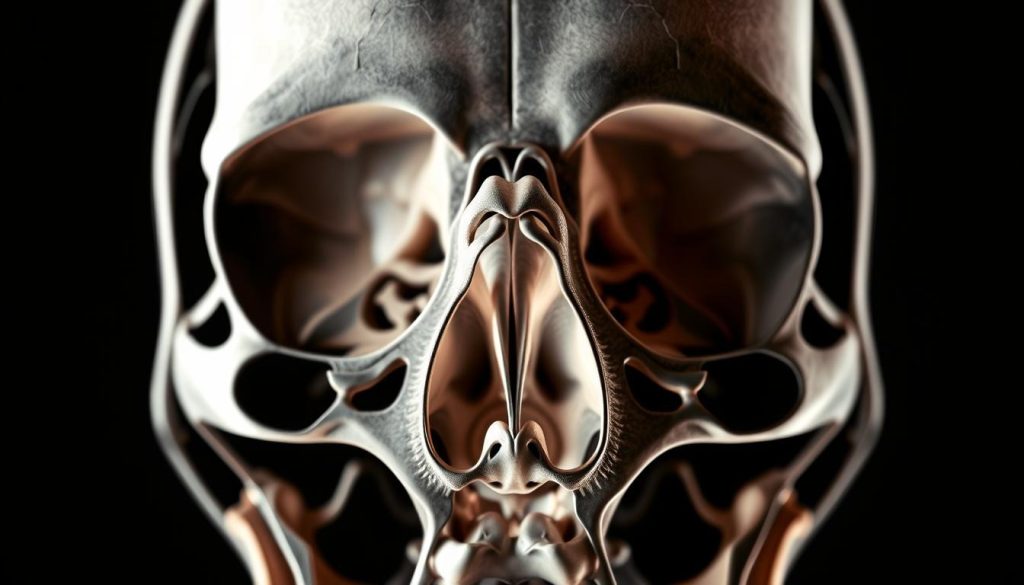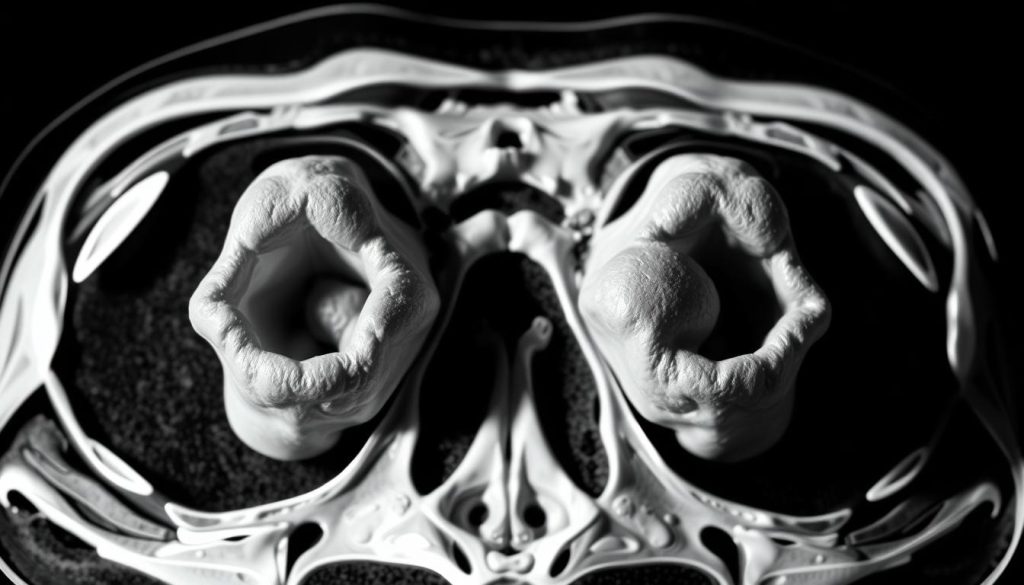Last Updated on October 21, 2025 by mcelik

At Liv Hospital, we know how key accurate diagnosis is for treating sinus issues. A CT scan of the sinuses is a top-notch tool that shows detailed images of the sinus structures. This helps doctors check and manage sinus health effectively.
Many patients wonder, “CT scan of sinuses ” what to expect? During this quick and painless imaging test, you’ll lie still while the scanner captures detailed images of your sinuses. The process usually takes only a few minutes and helps identify any blockages or infections.
We use this advanced imaging to spot and treat sinus problems like sinusitis and nasal polyps. A sinus CT scan shows the fine details of the sinus anatomy, helping us create specific treatment plans and achieve better patient outcomes.

CT scans for sinus evaluation are now common. It’s important to know how they work. We’ll explore the basics of sinus CT imaging, including what it is and its benefits.
A CT scan of the sinuses is a test that uses X-rays from different angles. It creates detailed images of the sinuses. This helps doctors find and treat sinus problems.
CT imaging offers detailed cross-sectional images, unlike X-rays. CT scans show more of the sinus anatomy than X-rays. MRIs are good for soft tissues, but CT scans are better for bones.
| Imaging Technique | Primary Use | Key Benefits |
| CT Scan | Detailed bone and sinus structure imaging | High-resolution images, fast scanning |
| X-ray | Initial assessment of bone fractures | Quick, low radiation |
| MRI | Soft tissue evaluation | Excellent soft tissue detail, no radiation |
The technology for sinus CT scanning uses a CT scanner that moves around the patient. It takes many X-ray images. Then, a computer turns these images into detailed views of the sinuses.
“The detailed images provided by CT scans are invaluable in diagnosing and treating sinus conditions,” says an ENT specialist. “The clarity and precision of CT imaging help us identify issues that might not be visible with other imaging techniques.”
Knowing how sinus CT imaging works helps patients. It makes them more comfortable when they get a CT scan.

Some medical conditions need a detailed look at the sinuses. Many patients often ask, “CT scan of sinuses ” what to expect? A CT scan of the sinuses is the best tool for this purpose. It gives clear, high-resolution images that help in diagnosing and treating sinus problems accurately.
Chronic sinusitis is a long-lasting inflammation of the sinuses. A CT scan of sinuses is key to seeing how bad the inflammation is and checking for any unusual anatomy or complications. Knowing CT scan of sinuses what to expect can also help patients prepare mentally before the procedure.
CT scans show doctors the best treatment options. They can see:
Nasal polyps are growths in the nasal passages and sinuses, often linked to chronic inflammation. A CT scan of sinuses is vital for finding and measuring these polyps and any structural issues. Understanding CT scan of sinuses what to expect can make the experience easier and more comfortable for patients.
It can also spot problems like a deviated nasal septum, helping doctors plan the right treatment ” including surgery when necessary.
After facial trauma, a CT scan of the sinuses is crucial. It shows how badly the sinuses and surrounding areas are injured. The scan’s images help in:
By knowing CT scan of sinuses what to expect, patients can feel more prepared and confident. This information is vital for surgical planning and allows surgeons to create a treatment plan tailored to the patient’s condition.
If you’re getting a sinus CT scan, knowing what to expect can help. We’ll walk you through the process to make you feel more at ease.
When you arrive, you’ll start with the registration process. Our team will help you with the paperwork. This includes your medical history and insurance details. Try to arrive a bit early to get this done.
The CT scanning area is designed to be both comfortable and efficient. The CT scanner is a large, doughnut-shaped machine that moves around you. You’ll lie on a table that slides into the scanner. Our equipment is top-notch, ensuring quality images with low radiation.
During the scan, you’ll lie on your back on the table. It will then move into the CT scanner. You might be asked to hold your breath or stay very quiet for a bit. The scan itself is quick, usually just a few minutes. Our technologist will be there to help you and make sure you’re comfortable.
As one patient noted,
“I was surprised at how quick and painless the CT scan was. The staff were very reassuring and explained everything clearly.”
This shows how important a caring and organized approach to your care is.
Understanding what to expect from your sinus CT scan can make you more confident. Our team is committed to making your experience as smooth and comfortable as possible.
To make your sinus CT scan smooth, prepare well beforehand. Good preparation helps get accurate results and makes the process more comfortable for you.
Before your scan, follow important steps. First, listen to any instructions from your doctor or the radiology team. This might mean arriving early to fill out forms or changing into a gown.
On scan day, remove items that could get in the way. This includes:
Removing these items ensures clear, accurate scan images. This helps in a precise diagnosis.
Tell your doctor about any health conditions, including pregnancy. Also, share any allergies, like to contrast dye. Giving a full medical history is key to a safe, effective scan.
Here’s a quick summary of what to do:
| Preparation Step | Description |
| Follow Instructions | Follow any specific instructions from your healthcare provider or radiology department. |
| Wear Comfortable Clothing | Wear loose, comfy clothes and avoid metal items. |
| Remove Interfering Items | Remove jewelry, glasses, and other accessories that could interfere with the scan. |
| Share Medical Information | Tell your healthcare provider about your medical history, allergies, and pregnancy status. |
Being well-prepared ensures your sinus CT scan is done right. This leads to a precise diagnosis and the right treatment plan.
CT scans without contrast are the top choice for checking sinuses. They give clear images of the sinuses. This makes them great for diagnosing sinus problems.
Non-contrast CT scans are the go-to for looking at sinuses. They show the sinuses well without needing contrast. This is good for a few reasons:
Even though non-contrast scans are the norm, contrast scans are sometimes needed. This is true for:
Getting a CT scan with contrast is different from one without. The main difference is the contrast agent:
Knowing these differences helps us see why non-contrast CT scans are usually the first choice for checking sinuses.
A sinus CT scan is a powerful tool for looking at the sinuses. It shows detailed images of the sinuses. This helps doctors diagnose and treat sinus problems.
A sinus CT scan shows the sinuses in great detail. It looks at the nasal passages, sinuses, and the bones and tissue around them. The scan can show the anatomy of the sinuses, including the frontal, ethmoid, sphenoid, and maxillary sinuses. This is important for understanding sinus conditions.
Doctors say, “CT scans give the most detailed images of the sinuses. They help with accurate diagnosis and treatment planning.”
“The detailed images from a sinus CT scan enable healthcare providers to assess the sinuses thoroughly, identifying any anatomical variations or abnormalities.”
A sinus CT scan can also show signs of inflammation and infection. The scan can show mucosal thickening, air-fluid levels, and other indicators of sinusitis. These signs are key for diagnosing sinusitis.
The scan can show signs of inflammation or infection. These include:
A sinus CT scan can also show structural variations and abnormalities. This includes nasal polyps, cysts, and anatomical variations that may be contributing to sinus issues. Knowing these variations is key for effective treatment.
By giving a detailed view of the sinuses, a sinus CT scan helps doctors diagnose and treat sinus conditions. The scan’s findings are very important for making treatment plans.
When you get your CT scan results, it’s key to understand what they mean. These images show your sinuses in detail. They help spot any problems that might be affecting your health.
Normal CT scans show clear sinuses without any big issues. But, if your scan shows problems like thickened mucosa or air-fluid levels, it’s not normal. Knowing the difference is important for getting the right treatment.
Abnormal scans can point to issues like sinusitis, nasal polyps, or other growths. We’ll help you understand what makes a scan abnormal.
Acute sinusitis scans show air-fluid levels and thickened mucosa. Chronic sinusitis scans show more lasting changes, like sclerosis and polyps. Spotting these signs helps doctors plan the best treatment.
It’s important to know the extent of sinus disease. This helps decide if you need medicine or surgery.
CT scans are great for finding soft tissue masses in the sinuses, like polyps or cysts. These can block your nose, make it hard to smell, and hurt your face. On a scan, they look like soft spots in the sinuses.
It’s important to know what kind of growth you have. This helps doctors come up with the best treatment plan.
After your sinus CT scan, you’re closer to knowing about your sinus health. But there’s more to do after that.
Right after your scan, you can usually go back to your normal day unless told not to. Our team will make sure you’re okay and give you any needed advice before you leave.
Our specialists will carefully look over your CT scan results. We know medical terms can be hard, so we’ll explain them simply. We’ll talk about any findings and if more tests are needed.
It’s important to understand your results because they guide your treatment. Our team is here to make sure you know everything about your care.
Based on your scan results, we might need to see you again to talk about your diagnosis and treatment. This could mean more tests, talking to other doctors, or starting treatment.
We aim to give you the best care for your specific needs. We’ll work with you to create a treatment plan that fits your health and condition.
By following these steps, we make sure you get the best care after your sinus CT scan. Our team is committed to your health and well-being every step of the way.
Sinus CT scans are very useful for doctors, but they have risks and limits. It’s important to know these to help patients better. These scans give detailed images of the sinuses, but there are downsides.
One big worry is radiation from CT scans. CT scans use X-rays to create detailed images. Even though the dose is low, it’s a concern, mainly for kids or those needing many scans. We try to use the least amount of radiation needed for clear images.
The risk of cancer from radiation is low, but we’re careful. We follow the rule of keeping doses as low as possible (ALARA) to reduce this risk.
CT scans are not perfect. Sometimes, they can’t give a clear diagnosis or might show false information. The quality of the scan, the doctor’s skill, and artifacts can affect this. We aim to reduce these issues by using top-notch imaging and skilled radiologists.
False positives or negatives can cause wrong treatments or delays. So, we always check CT results against symptoms and other tests.
At times, a CT scan might not give enough information, or the results could be unclear. More tests, like MRI or nasal endoscopy, might be needed for more details. We think about these options if the CT scan isn’t enough.
Choosing more tests depends on the patient’s symptoms, medical history, and the CT scan results. We make decisions based on each case.
Advanced CT technology has changed how we diagnose and treat sinus problems. Now, we can make more accurate diagnoses and create better treatment plans.
Advanced CT technology is key in planning sinus surgeries. It gives surgeons detailed images of the sinuses. This helps them understand each patient’s unique situation.
CT scans also help with surgical navigation systems. This combo makes surgeries more precise and confident.
| Benefits of Advanced CT in Preoperative Planning | Description |
| Detailed Anatomical Information | Provides a clear understanding of the patient’s sinus anatomy |
| Enhanced Surgical Precision | Allows for more accurate surgical planning and execution |
| Better Patient Outcomes | Leads to improved patient outcomes due to more precise surgery |
Creating 3D reconstructions of the sinuses is a big step forward. These reconstructions give a detailed view of the sinuses. This helps understand complex structures better.
Virtual endoscopy is another use of advanced CT technology. It lets doctors simulate endoscopic procedures. This gives insights into the sinuses without actual endoscopy.
Recent studies have used advanced CT technology to measure sinus inflammation. This helps doctors understand how severe sinusitis is. It also shows if treatments are working.
These improvements in measuring inflammation are key to personalized treatments. Tailoring treatments to each patient’s needs can lead to better results and fewer complications.
Liv Hospital is dedicated to excellence in sinus CT imaging. We know how critical an accurate diagnosis is for treating sinus issues. Our cutting-edge technology ensures top-notch care for our patients.
At Liv Hospital, we use the latest CT technology for detailed sinus images. Our protocols aim for the best image quality with less radiation. This makes our diagnostic process safe and effective.
Our CT scanners have advanced software for images from different angles. This gives our ENT specialists a full view of the sinuses. They can spot even the smallest problems.
Our ENT specialists at Liv Hospital are experts in reading sinus CT scans. They know the sinus anatomy well and can spot various conditions. This means they can give accurate diagnoses.
Our specialists work with other healthcare teams to create detailed treatment plans. This teamwork ensures our patients get the best care possible.
At Liv Hospital, we see diagnosis as just the start. Our sinus CT imaging is part of our full treatment plans. These plans include medical, surgical, and supportive care.
By using advanced tech, expert interpretation, and complete care, we aim for the best results. Our goal is to help patients achieve the best sinus health and improve their quality.
CT scans are key in diagnosing and treating sinus problems. They give detailed images that help doctors make treatment plans. At Liv Hospital, we use the latest CT technology for top-notch imaging services.
These scans help doctors see the sinus anatomy clearly. They can spot problems and plan treatments. This way, we can make care better and improve patient results.
As we keep improving in sinus care, CT scans will stay very important. We use new technology and expert analysis to give patients the best care for their sinus issues.
A CT scan of the sinuses is a test that uses X-rays and computer technology. It makes detailed pictures of the sinuses. This helps doctors find and treat sinus problems.
A CT scan shows detailed pictures of the sinuses. It helps doctors see signs of infection, inflammation, or other issues. This includes things like nasal polyps or cysts.
Non-contrast CT scans are better for the sinuses because they show clear images. They don’t need contrast agents. This is good for patients with certain health issues.
CT scans help doctors diagnose sinusitis by showing detailed images. They help see how bad the inflammation is. They also spot any complications or structural problems.
CT scans give more detailed images than X-rays. They use X-rays, not magnetic fields like MRIs. This makes CT scans great for seeing sinus structures and bone issues.
Before a sinus CT scan, you might need to remove jewelry or glasses. You should also tell your healthcare team about any important health info. This ensures the scan is safe and effective.
During a sinus CT scan, you’ll lie on a table that moves into a CT scanner. The scanner will take pictures of your sinuses. The whole process is usually quick and painless.
CT scan results help doctors plan treatment. They use the detailed images to diagnose sinus conditions. This helps decide if surgery is needed and how to treat it effectively.
Sinus CT imaging uses radiation, which is a risk. There might be limits to diagnosing some conditions. But, the detailed images CT scans provide are often worth the risk.
Yes, a CT scan can show signs of a sinus infection. It can spot inflammation, fluid, or thickened mucosa. This helps doctors diagnose and treat sinus infections.
CT scans are key in planning sinus surgery. They give surgeons detailed images of the sinuses. This helps them plan precise and safe surgeries.
Liv Hospital uses the latest CT technology and protocols. They have expert ENT specialists who interpret the scans. They also work with a complete treatment plan for patients.
Subscribe to our e-newsletter to stay informed about the latest innovations in the world of health and exclusive offers!
WhatsApp us